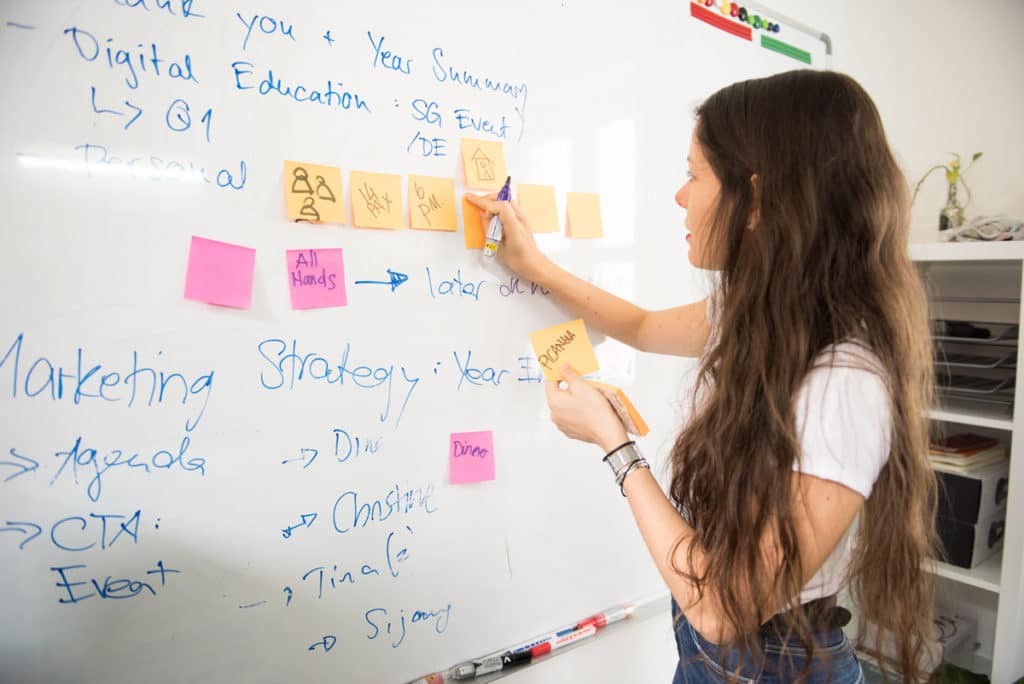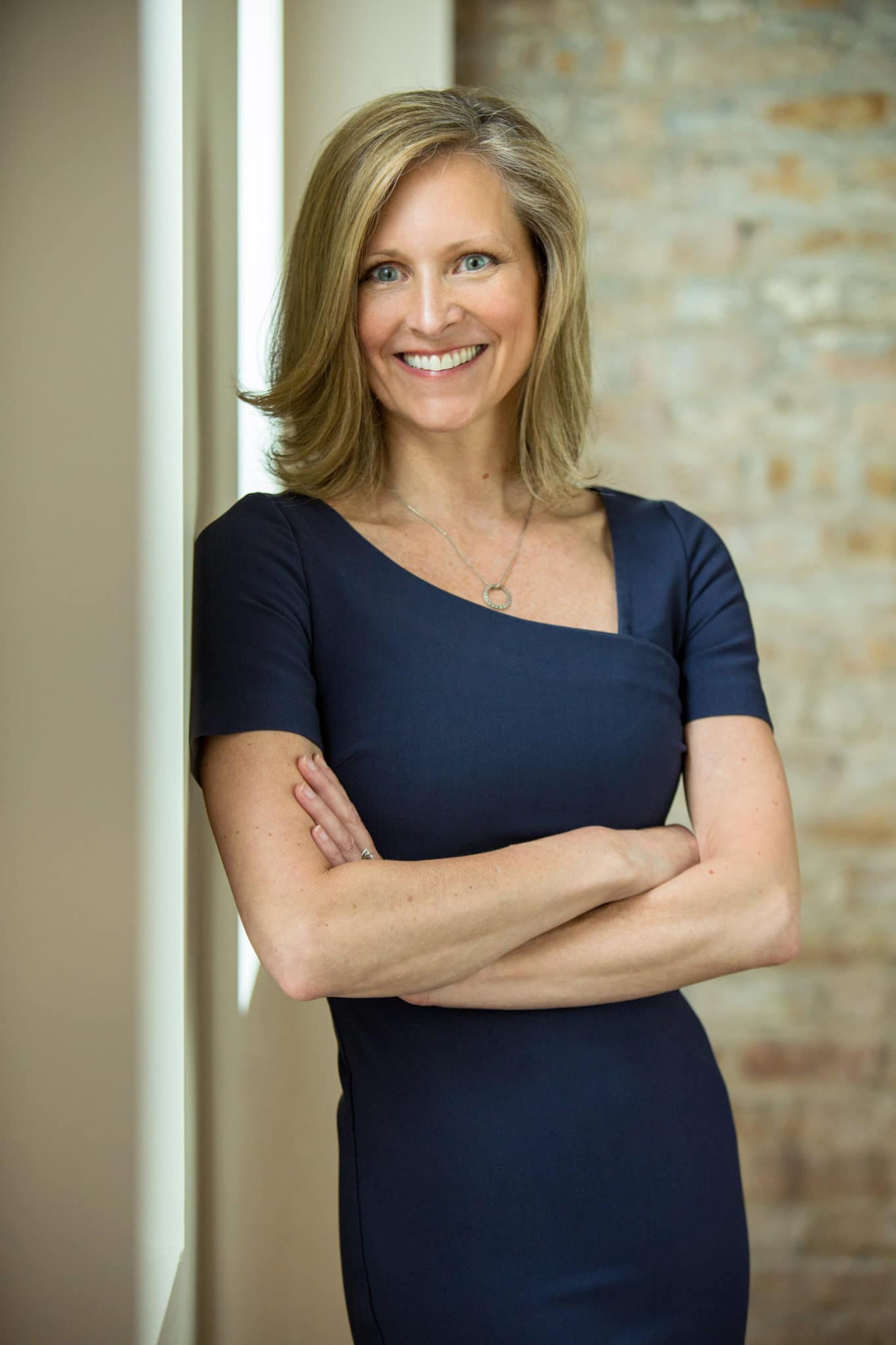How to Hold Better Brainstorming Sessions

Chris Broderick is president of B.near Global, a people and culture consultancy. She was a keynote speaker at Association Forum’s Women’s Executive Forum in 2021.

Chris Broderick is president of B.near Global, a people and culture consultancy.
She has more than 20+ years working in corporate America and has worked with more than 40,000 managers to understand what the best managers do differently and how leaders can impact their working environments for good.
Association Forum: Thank you for taking the time to chat with us. Tell me more about B.near’s work and what makes a good leader.
Broderick: Of course. Well after more than 20 years in corporate America, I wanted to look at what the best leaders do and how that impacts the office environment. So I married my own experiential knowledge with what scientists have proven in the areas of psychology, social science and business research. And they’ve all landed on these areas of truth, trust and optimism.
AF: And how do those things work in a business environment?
AF: Sounds great. How about trust and optimism?
Broderick: Trust at work is what creates a psychologically safe space. And optimism at work is fueling discovery and innovation. So, that’s what creates the belief that together we can do anything.
AF: And how can we achieve truth, trust and optimism?
Broderick: The kind of things that B.near does is help with employee listening strategies, help embed inclusion into the way work happens, and then we help companies measure what matters. You can use the data you have within your organization to make better people decisions. So again: truth, trust and optimism are the focus and we help companies figure out how that’s showing up in their work.
AF: Great. Let’s shift and talk about brainstorming. Can you walk me through the process you presented at Women’s Executive Forum?
Broderick: Sure. First, I take no credit for the process. It comes out of MIT from a scientifically-based foundation. Hal Gregersen is the executive director of the MIT Leadership Center and he wrote a book called “Questions Are the Answer.” This is a great book to find more information on the process.
The format is two minutes to frame the question/the problem/the challenge. And then four minutes of brainstorming on any and every question that folks can think of. During that time, the person who framed the problem cannot say a word.
AF: Yes. And I remember the session being extremely helpful. When I framed a challenge, I wrote down every question my group members threw at me.
Broderick: Exactly. The idea is that all of us have blind spots. You may have heard it called the “unknown unknowns” or that we don’t know what we don’t know. So, we really want to focus on asking more questions and better questions rather than trying to have the answers.
There are times when folks find themselves in an executive director position, managing director position, or just a leader in general. And they feel like they need to know the right answer; but it’s really by recognizing that there’s so much stuff we don’t know, and that there’s a wealth of resources around us, like people with different perspectives, different experiences, that can help us and round out our knowledge based on the questions they help us to see.
AF: That’s great. How else can we address blind spots?
Broderick: In the session, I mentioned the kinds of things we can do in our everyday lives to help minimize our blind spots. It’s really about venturing out into new places, hanging out with folks who have completely different perspectives and backgrounds than you do. And then, put yourself in situations where you’re wrong more often than you’re right. And that may be the hardest, right? When we get into places or we get around people that shift what we thought we knew was right, we get really uncomfortable. But the truth is, that’s when we start opening up to new ideas and we start to ask ourselves different questions and that’s really going to help us to move in some new directions.
AF: That’s so interesting. Can you give me some examples of places where one would be wrong more often than they’re right?
Broderick: It could be anything, just think of a space that you don’t know. Maybe you go to a new networking group that you’re interested in but don’t know much about. Think of Bitcoin. Maybe you’re interested in it and you thought you knew financial markets but you find yourself having a hard time conversing about this new and emerging space. When we are uncertain, we are quiet and we listen more. You can listen and you can begin asking questions; and you get some new perspective.
AF: That’s a great idea. So, how can groups facilitate this kind of brainstorming at their own organizations?
Broderick: Well, it’s certainly something that B.near can help facilitate. But it’s also a really simple process. Let’s say that an organization is trying to sort out additional revenue streams. Rather than trying to find the right solution, use this process to say “what are the questions we should be asking?” What are the things we have and haven’t considered?
And don’t just involve people from sales or whatever arm of the organization that brings in revenue. Bring in people from all different aspects of the organization. Maybe even bring in some of your members. By bringing in a variety of different people with different perspectives you can ask fresh and new questions.
AF: What a great way to leverage your resources as an organization. Any other thoughts on helping us think differently? Or, just avoiding “groupthink” in general?
Broderick: Certainly, the notion of diversity and inclusion are front and center now more than ever. And, it’s not just because it is the right thing to do–which it is. But, it’s also because study after study is showing the business benefits associated with it. McKinsey came out with a report this year that demonstrates 30% higher performance by companies that have both gender and ethnic diversity within their teams. And so, when you’re pulling together those groups of individuals, make sure you’ve got a mix of folks from an ethnicity perspective, from a gender perspective, from a cognitive perspective.
There’s a company called Ultranauts. It’s a quality engineering and assurance firm and 75% of their employees are on the autism spectrum. Some of their employees can’t speak, and some have Tourette syndrome. They are 100% remote and they have built-in mechanisms for ensuring the environment is inclusive. So, that’s something I would encourage organizations to do–don’t just think of D and I as a moral obligation, but also realize that it does drive better business.
AF: That’s great. Thanks for sharing that. Is there anything else you’d like to offer our readers?
Broderick: Well, in terms of getting a better idea of what’s happening with your employee population right now, there’s so much affordable technology available. How engaged are folks? Where are things working so that you can do more of it? Where are things not working so that you can improve those areas? There is technology available to to help.
Research has shown that the more highly engaged employees are, the greater the satisfaction of customers and members. My teams have proven that when employees are more engages in their work and in the purpose of the organization, they are doing a better job and driving higher performance overall for the business.
AF: That’s so important to keep in mind. Thanks again for speaking with us.
Broderick: Thank you for having me!
Tags
Related Articles
Double Your Footprint: Enhancing Conferences with a Hybrid Event Workflow
By combining on-site engagement with a digital experience, hybrid events can attract diverse audiences, boost...
The Emergency Nurses Association Utilizes Design Thinking to Reimagine its Awards Ceremony
In a prime example of intrapreneurship, the ENA utilized design thinking to innovate within the...
Top Ten Skills Needed to be a Meeting Planner of the Future
Now, more than ever, meeting planners need to be flexible and savvy. Read on for...




